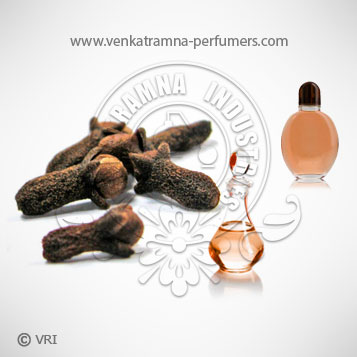
| Botanical Name | Syzgium aromaticum |
| Common Name | Clove, Clovos, Caryophyllus |
| Country of Origin | Indonesia, India, Pakistan, Sri Lanka |
| Solubility | Soluble in oil, insoluble in water |
| Specific Gravity | Not Applicable |
| Optical Rotation | -2.0 – 0.0 @ 20°C |
| Refrective Index | 1.528 – 1.537 @ 20°C |
| PlantPart | Buds |
| Bland With | Blends well with other spice oils including Cinnamon Bark, Nutmeg, Citronella, Grapefruit, Lemon, Orange, Peppermint, Rosemary, and Rose. |
| CAS No | 8000-34-8 |
| Flash Point | > 100 °C |
| Extraction Method | Solvent Extraction |
Clove Bud Oleoresin is prepared by solvent extraction of clove bud. This oleoresin is extremely concentrated product which contains more flavoring ingredients that can be soluble in the particular solvent used, as it turns much close to original clove flavor and odor. A concrete, absolute and oleoresin are also produced by the buds in small quantities.
The word Clove comes from the Latin word clavus, meaning nail, since the shaft and head of the clove bud resembles an ancient nail. Cloves and nutmeg were among the most precious of spices of Europe of the 16th and 17th centuries, and were worth more than their weight in gold. Today it is used worldwide as a culinary spice from East Indian masala blends to Dutch cheeses, in herbal cigarettes and pomanders, and even as an ant repellent.
Color : A pale yellow liquid with a warm, sweet-spicy odor,
Aroma : Clove Bud Essential Oil smells spicy like actual cloves
The main constituents of clove oil are eugenol, eugenol acetate, iso-eugenol and caryophyllene.
Extensively used as domestic spice worldwide. It has been used for skin infections (scabies, athlete’s foot); for digestive upset; to dress the umbilical cord; for intestinal parasites; to ease the pain of child birth (steeped in wine); and notably for toothache. The tea is used to relieve nausea.